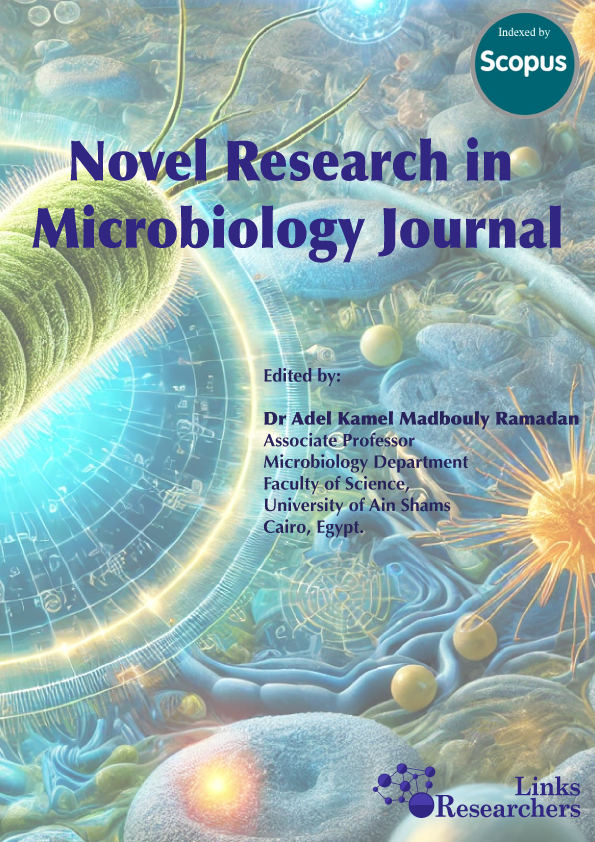Screening and interaction between pathogens and antagonistic seed-borne fungi, associated with some organic spices and vegetable crops in Tunisia
Novel Research in Microbiology Journal (2019), 3(1): 232-242
Screening and interaction between pathogens and antagonistic seed-borne fungi, associated with some organic spices and vegetable crops in Tunisia
Ibtissem Ben Salem1; Yosra Abdelkhalek1; Houssem Nabli3; Neji Tarchoun2; Naima Boughalleb-M’Hamdi1*
ABSTRACT
Seed-borne pathogenic and antagonistic fungi were isolated from the same organic vegetable and spice seeds (carrot, fennel, broad bean, faba bean, and lettuce), and the interaction between them were studied as a part of a biocontrol assay. In vitro dual culture assay between each pathogen and the antagonists on PDA medium was made, which led to the inhibition of the pathogens mycelial growth. According to results generated for fennel seed-borne fungi, direct confrontation of the five pathogens (Botrytis cinerea, Sclerotinia sclerotiorum, Cladosporium cladosporiodes, Cladosporium link and Bispora sp.), with Aspergillus niger and Penicillium digitatum showed an inhibition of radial growth above 50%. For lettuce; the highest inhibition was recorded by Trichoderma harzianum in confrontation with S. sclerotiorum, and P. digitatum in confrontation with Alternaria alternata. For carrot, three fungal pathogens were identified as: A. alternata, A. solani and Pythium sp., which were faced with three antagonists (P. chrysogenum, A. niger and T. harzianum), and showed radial inhibition about 50%. Concerning broad bean and baba bean; only A. alternta was isolated, and has been confronted with T. harzianum, P. digitatum, and P. italicum. During in vivo assays on fennel plant in the greenhouse; a disease severity index caused by various pathogens alone and in combination with antagonists compared to control plants, was recorded. According to results observed, fennel plants inoculated with B. cinerea and treated curatively with P. digitatum and preventively with A. niger; recorded a low disease severity index value of 0.22. This work was carried out to find effective seed-borne bioagents that could cause in vitro and in vivo inhibition of the growth of several fungal pathogens of vegetables; thus could be applied in the field for the biocontrol of fungal spice and vegetable crops diseases.
To share on other social networks, click on any share button. What are these?





